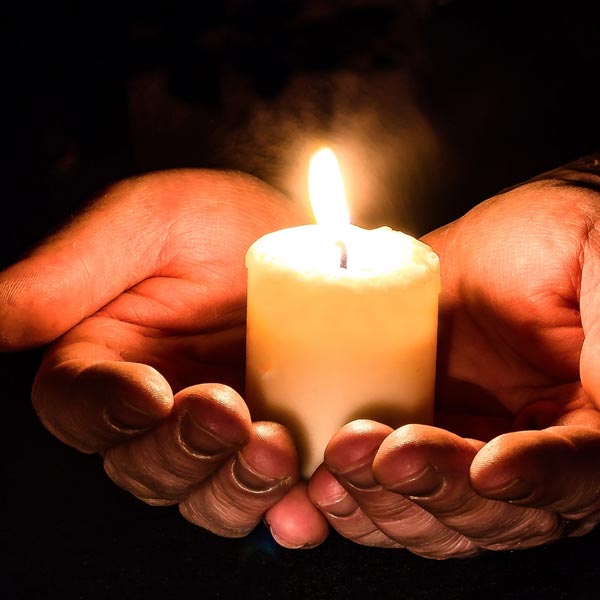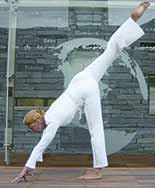What is Bhakti Yoga, and how can it help us on our journey of self-discovery? Paul Krystall and Jane Clapham explain:
Yoga helps to harmonize our body, mind and spirit, or in other words, to unite our human selves with our true spiritual selves. And Bhakti Yoga is one of the four major yogic paths often known as the path of love.
Chris Barrington, one of the senior Dru Yoga teachers says ‘Bhakti is a lifestyle choice. It is choosing to live your life in such a way that you let love dominate everything’. It is living with a focus of deep and intense love for that which you value most in life. In many of the traditional yoga lineages, this love was a love for God. But it can also be finding the love inside of you, finding that which makes your heart sing or finding that which switches your awareness from your own self to a universal presence of love and joy.
One of the beautiful things about yoga is that there are different paths for all personalities. People who have faith and trust that there is some force loving us and guiding us will be more drawn to Bhakti than those who do not. How might the bhakti path look?
 Let us take a yogic practice like Tratak, a meditation technique where you develop an uninterrupted gaze at a candle flame. This practice improves concentration and clarity, but a candle is an impersonal object. A practitioner of Bhakti Yoga – or Bhakta – might focus the gaze on an image of something he or she already loves so much.
Let us take a yogic practice like Tratak, a meditation technique where you develop an uninterrupted gaze at a candle flame. This practice improves concentration and clarity, but a candle is an impersonal object. A practitioner of Bhakti Yoga – or Bhakta – might focus the gaze on an image of something he or she already loves so much.
By doing this, Bhakti uses devotional things already inside of us to create focus and concentration becomes easy and effective. The more you focus on that which you love, the more you fill yourself with love, and ultimately you merge with the object of your focus. Bhakti also often leads to moments of total connectedness and joy, and to experiencing these moments more often or more intensely.
The words often associated with Bhakti include ‘sweet’, ‘devotion’, ‘faith’, ‘worship’ and Bhakti is commonly associated with singing, mantras and joyousness. But people who follow it note that it requires discipline and a committed practice. Bhakti is an active process where you cultivate emotions like gratitude and happiness that open up your capacity to love, connect and be a positive force in the world. Bhakti is also very much about service to that which you love.
“Even as drops of water make the ocean, so we too, through friendship, can become an ocean of friendliness. The shape of the world would indeed be transformed if all of us lived in a spirit of love and amity with one another.”
Mahatma Gandhi
The Other (Main) Paths of Yoga
Bhakti and the other paths of yoga are not actually separate paths. They can be practised alone or in combination with each other, and they all lead to the same destination.
Karma-yoga is the yoga of action. When we act for ourselves, the actions are – by definition – selfish. Karma-yoga includes actions that are self-less, actions made without any expectation of self-benefit, or acting for a greater cause. And as the Bhagavad Gita explains, any action which originates from your life-purpose or is fully dedicated to the benefit of all can lead to personal transformation and be liberating.
Jnana-yoga is the yoga of knowledge (or wisdom) of the self. It is an intellectual path that involves studying the philosophies contained in ancient scriptures like the Bhagavad Gita, the Upanishads, and commentaries from other philosophers to learn what is real and what is not to learn who you really are. It leads to the mastery of the philosophy of self-realization.
Ashtanga/ Raja Yoga Asta means "eight" and anga means "part." Astanga-yoga is a process divided into eight stages, based on the Yoga Sutras of the sage, Patanjali. Many modern practices of raja yoga are related to the purification of our physical body, mind, energy body and achievement of mastery over the senses and mind. When the mind can be stilled, then self-realization is possible.
How to make Bhakti yoga practical?
In our experience, coming together with other like-minded people can help foster the qualities of Bhakti yoga - compassion and connection. Bhakti practices often include movement, meditation, kirtan, art or even cooking - it all just needs to be done with love and reverence. Then Bhakti can take us forward in our journey of self-development - to the highest goal of aligning with the highest Self. All power to your Bhakti!
Want to explore Bhakti in more depth?
Join us at the Dru Bhakti Immersion on 10-12 September 2021. Click below to find out more:





























